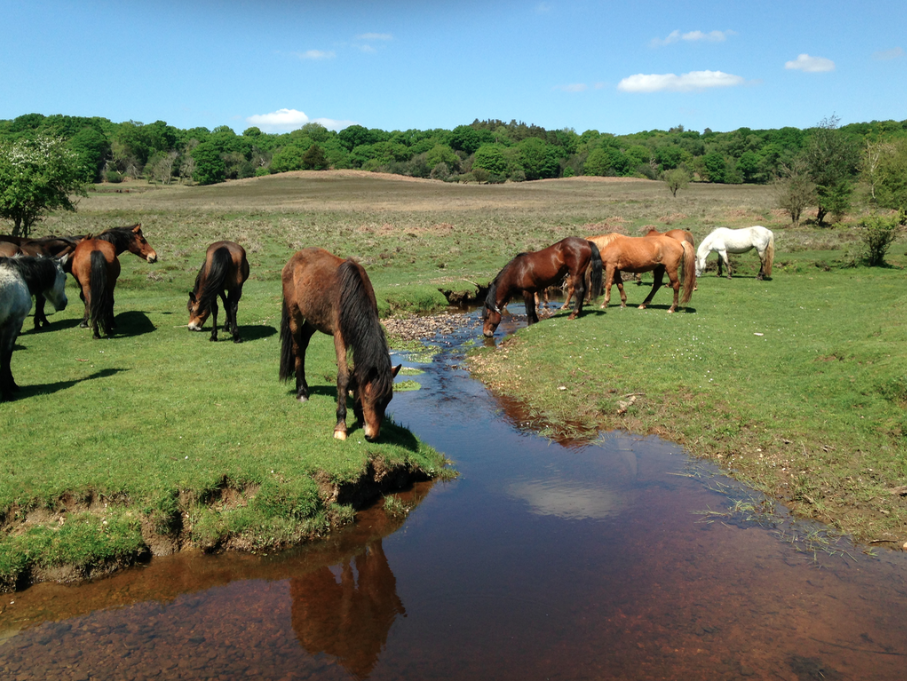
A stallion takes a drink – chasing mares is thirsty work!
There has been a lot of excitement on the New Forest recently due to the stallions being released onto the Open Forest. This is an annual event and, this year (2014), ten male ponies have been turned out to run with the free-roaming mares. The stallions are permitted to roam for four weeks only and thus have a short window of opportunity to provide the next generation of New Forest pony. Each stallion is carefully vetted by the Verderer’s of the New Forest and the New Forest Pony Breeding & Cattle Society to ensure that the best qualities, in terms of confirmation, temperament, stamina and such like, are passed on to the foals. Only stallions passing inspection are permitted to run on the Open Forest. By controlling the number released and the length of time each stallion is permitted to roam the Forest, it is hoped that the number of foals produced will be fewer but of better lineage and confirmation, and therefore in greater demand. This is how the population of the New Forest ponies is managed today – and not by culling, as happens in some wild horse populations in other countries – however, there were attempts in Tudor times to improve the breed by slaughtering smaller, under-height animals.
Census and slaughter of ponies
In the Horse Act 1540 Henry VIII decreed that an annual census be held at Michaelmas tide to weed out and slaughter “all unlikely tits whether mares or foals”, from which todays system of drifts derives. The Act ordered that no stallion under 15 hands and no mare under 13 hands was permitted to run out on common land or run wild. However, the annual cull of “under-height” horses demanded by her father was partially repealed by Queen Elizabeth I in 1566, as it was recognised that the poor soils of the New Forest could not produce the grazing required to sustain larger animals.(The commoners had ignored the order to kill their ponies in any case.) Other attempts to introduce other qualities into the New Forest pony breed, such as speed, height or appearance, have included mixing in other native breeds, such as Dartmoor, Welsh and Exmoor, and even thoroughbred and Arabian horses. In 1765 the thoroughbred stallion, Marske was used on New Forest mares but when one of his foals, Eclipse, turned out to be a racing legend he was swiftly returned to racehorse stud duties.
Surviving on the Forest
In the Victorian era Arabian stallions were borrowed from the royal stud to sire foals with New Forest mares. This scheme did not prove popular with the commoners. The stallions found it difficult or even impossible to survive on the Open Forest, and so were used on stud farms to which most commoners mares did not have access. The commoners wanted a more robust influence on the New Forest breed and this they got in the form of the Forest itself. One commentator observed that the power of Nature tends to ‘grind down and assimilate these types to the one most suited to the land’. The New Forest pony makes the landscape and the landscape makes the New Forest pony. Although another observer remarked wryly that it wasn’t the fastest, best looking or even the noblest stallion that produced the future generation of New Forest foals. It was in fact the dirtiest fighter!
From Monday 19th May stallions were turned out on the Open Forest and will run with the mares until Monday 16th June. The areas with free-roaming stallions can be viewed on the following link: http://newforestcommoner.wordpress.com/2014/05/21/new-forest-stallion-areas-2014/



You must be logged in to post a comment.